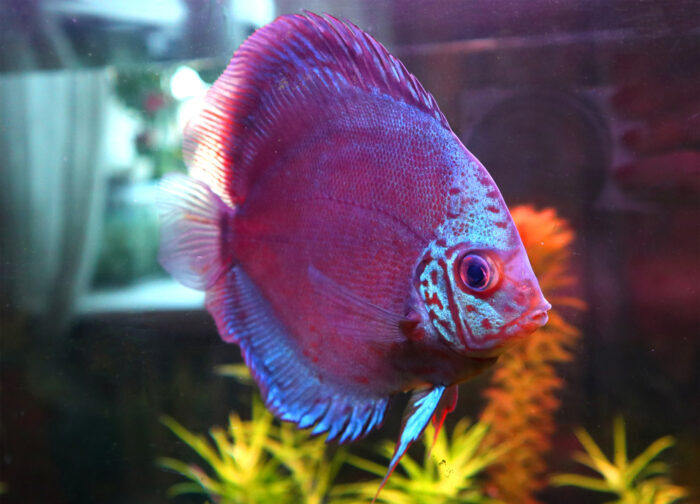Setting up a freshwater aquarium can be an incredibly rewarding hobby. Beyond the relaxing nature of having a home aquarium, keeping rare and unique fish species can make the experience even more special. In this article we talk about Top 5 Rare Freshwater Fish for Your Aquarium.
While common freshwater fish like guppies, tetras, and barbs are great starter fish, adding a few rare species to your tank can make things more interesting. Not only do rare freshwater fish have unique colors, body shapes, and behaviors, but they also often require specific water conditions and food that make taking care of them a fun challenge.
In this blog post, we’ll highlight 5 of the rarest and most unique freshwater fish that can be kept successfully in home aquariums. From nearly extinct species to unusual variants of more common fish, these are some of the most fascinating rare fish available to hobby aquarists.
Table of Contents
Asian Arowana
One of the most coveted and rare freshwater fish in the world, the Asian arowana is a sight to behold. Sometimes known as dragon fish, arowanas are elongated fish that can grow over 3 feet long in captivity. Their large metallic scales come in a variety of shades like red, green, gold, and silver-blue.
Beyond their striking appearance, arowanas have a very distinctive personality. They will interact with their owners, following movement outside of the tank. While not recommended for beginners, experienced aquarists will enjoy the unique experience of keeping one of these rare fish.
Due to overfishing and loss of habitat, Asian arowanas are endangered in the wild and quite rare. However, captive bred color varieties are occasionally available. An Asian arowana requires at least a 250 gallon aquarium and can cost over $1,000! But for serious fishkeepers seeking a rare and interactive fish, they are one of the most rewarding freshwater species.
Flowerhorn Cichlid
The flowerhorn cichlid is a hybrid fish developed in Malaysia by breeding different cichlid species from South America and Africa. These fish stand out for their vivid colors, unusual headgrowth, and flowing fins. Flowerhorns have quickly become popular throughout the world, but high quality specimens are still quite rare.
No two flowerhorns have the exact same color pattern or head shape. Reds, oranges, yellows, blacks, and whites all mix together in unique combinations. As they mature, flowerhorns develop a distinctive nuchal hump on their head. Some even form shapes that resemble actual flowers. These traits depend greatly on genetics and care, making each flowerhorn truly one-of-a-kind.
Flowerhorns have an aggressive temperament and do best alone or with larger tankmates that won’t be bullied. Providing these cichlids with a 100 gallon or bigger tank and high quality foods brings out their best colors and features. For aquarists looking for a rare fish that they can help raise into a showstopper, flowerhorns are a rewarding choice.
Zebra Pleco
Plecos are a group of catfish boasting armored bodies and suckermouths for eating algae. While common plecos are found in fish stores everywhere, zebra plecos are a rare type that only experienced aquarists have the chance of acquiring.
As their name suggests, zebra plecos have a striking black and white striped pattern covering their body and fins. Small and peaceful, they reach about 4 inches in length. However, they require well maintained tanks with plenty of hiding spots and clean water conditions.
Zebras plecos eat a primarily vegetarian diet of driftwood, algae and plant matter. They are shy and typically only come out to eat at night or when no one is watching. Being one of the rarer plecos species makes them highly desirable to specialty aquarists willing to provide good care.
Native to Brazil, zebra plecos are threatened by pollution and habitat loss. Their limited numbers and breeding challenges also contribute to their rarity in the fish trade. But for patient aquarists, keeping a small group of these exotic looking fish can be very fulfilling.
Red Tailed Black Shark
While most freshwater sharks are silver in color, the red tailed black shark is a striking alternative. As juveniles, they have bright red caudal fins that contrast with the black body. As adults, the red becomes a more muted orange shade but is still quite eye catching, especially when swimming quickly.
Beyond the vibrant tail, red tailed black sharks have sleek bodies that grow to 6 inches in length. They move gracefully through the water and have noticeable personality. Like their marine namesakes, these fish are semi-aggressive and require at least a 55 gallon aquarium with plenty of territory.
Red tailed black sharks should be kept singly or with robust tank mates. Providing them with places to hide, ample swimming room, and a varied diet brings out their best health and coloration. For keepers wanting something a little different, this rare freshwater shark species hits the mark.
White Cloud Mountain Minnow
Our last entry is the unassuming white cloud mountain minnow. Despite their small size and simple gold-brown colors, these minnows are one of the more rare fish species found in the aquarium trade.
Once common in the wild, habitat destruction in China has devastated white cloud mountain minnow populations. However, captive breeding programs have allowed this hardy little species to rebound. They stay under 2 inches in size and do well in cooled water temperatures under 70°F.
While their looks are modest, white clouds make up for it with their active schooling behavior. Groups of 6 or more minnows will happily swim together, providing constant motion in your aquarium. They also breed readily, allowing you to supply family and friends with a rare species to keep.
Conclusion
Adding rare fish like these to your freshwater aquarium provides an experience you won’t find with common species. Their unique qualities, appearances, and behaviors make them fascinating to keep. Yet all of these rare fish require research and special care to help them thrive. I sincerely hope you find this “Top 5 Rare Freshwater Fish for Your Aquarium” article helpful.

Louis Vu, the Lead Writer at TanknFish.com, holds a Master’s degree in Marine Biology and brings over 6 years of expertise in the world of aquatics and fish care. With a profound passion for aquatic life, Louis is committed to delivering insightful and practical advice to help enthusiasts maintain vibrant and healthy fish tanks. Connect with Louis on social media: Instagram and Pinterest





